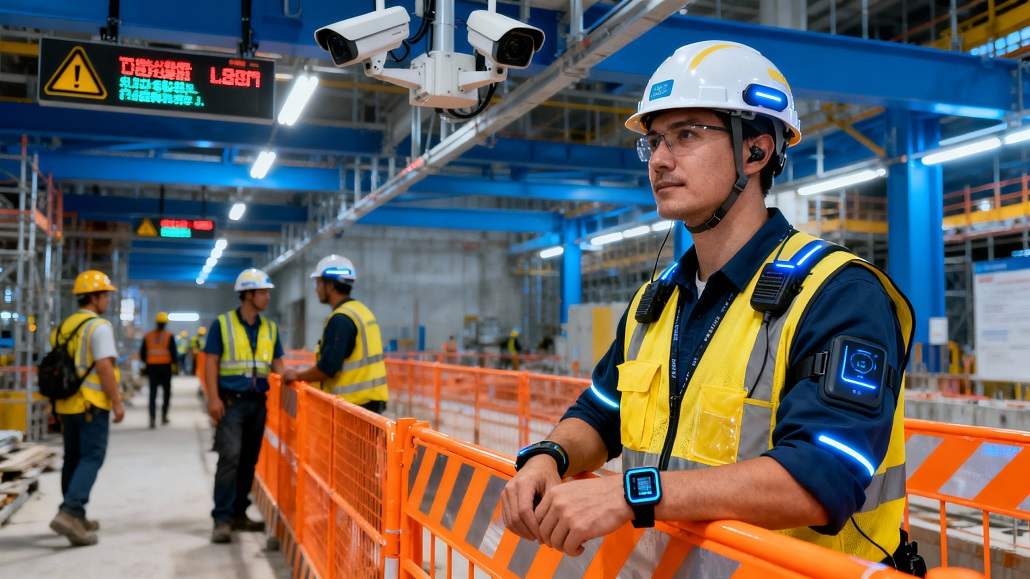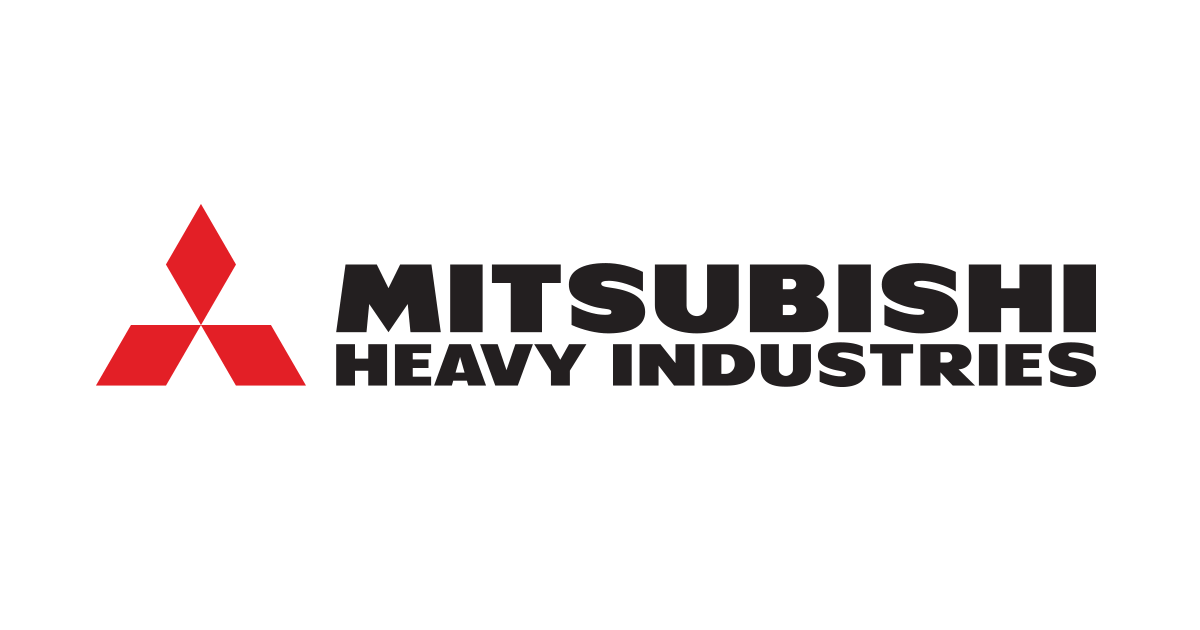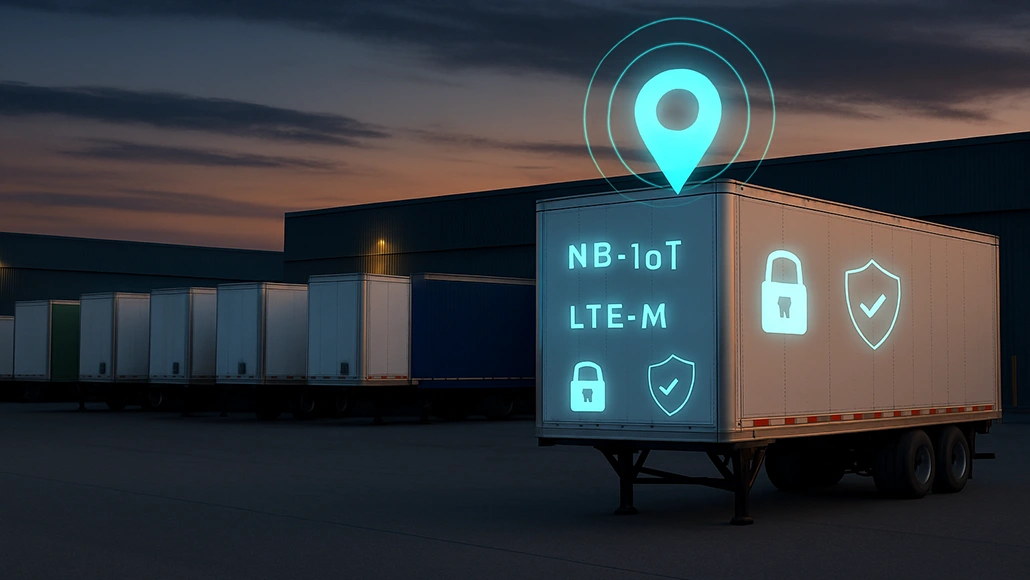When It's Time to Do Some Real Dirt Moving – The Latest in Dozers for 2024
Features such as electrohydraulic controls, 2D and 3D machine control and designs to make operation easier are becoming more prevalent...

In this report, we hear from major manufacturers about the latest advancements in dozers for 2024.
Features such as electrohydraulic controls, 2D and 3D machine control and designs to make operation easier are becoming more prevalent on the newer earthmovers – not only to improve productivity but to help less experienced operators.
Case
Case Construction Equipment’s M Series dozers include electrohydraulic blade control, which reduces overall operator fatigue while increasing productivity, as a standard feature on all but the 650M.
Shuttle (forward-to-reverse), steering and blade sensitivities can be customized to operators’ preferences, experience levels and site conditions:
- Smooth for very deliberate movement;
- Moderate for regular operation;
- Aggressive for fast and immediate response.
Case dozers can be outfitted with a full range of 2D and 3D machine control systems. Owners can include their choice of factory-fit machine control in the initial purchase. Case Universal Machine Control provides compatibility with machine control from Leica, Topcon or Trimble.
Case hydrostatic drive and advanced load management systems automatically respond to loads to reduce track speed and increase torque or increase track speed and reduce torque for optimal power and efficiency.
Floor-to-ceiling glass, a low sloping front hood and low-profile front idlers are designed to maximize visibility.
Caterpillar
 The Cat D8 is powered by a Cat C15 engine rated at 363 net horsepower mated to a fully automatic four-speed transmission with Lock-up Clutch torque divider. The standard semi-U blade has a capacity of 13.47 cubic yards, and that SU model has an operating weight of 87,083 pounds. Options include extreme service brakes, double reduction final drive and sound suppression.Caterpillar
The Cat D8 is powered by a Cat C15 engine rated at 363 net horsepower mated to a fully automatic four-speed transmission with Lock-up Clutch torque divider. The standard semi-U blade has a capacity of 13.47 cubic yards, and that SU model has an operating weight of 87,083 pounds. Options include extreme service brakes, double reduction final drive and sound suppression.Caterpillar
Cab technology will now be common to all six models. Shared features include better seating, better monitors and built-in ROPS, rather than separate posts, for improved visibility.
“The new D8 feels like a D6 in its visibility and maneuverability,” says Sam Meeker, market professional, Caterpillar.
Advanced Cat Assist with ARO has been brought up from the five smaller models to the D8. Among the many features of Cat Assist with ARO, five stand out:
- Stable Blade now controls both lift and tilt with the ability to set responsiveness for improved finishes.
- AutoCarry automatically maintains full blade loads and has a floor setting to prevent digging below the last blade position commanded by the operator.
- Blade Recall returns the blade to a preset position with just the press of a button and is especially helpful at the beginning of each pass.
- Application Profiles are built-in factory presets accessed via a dedicated keypad button and are separate from operator profiles.
- AutoRip automatically adjusts ripper depth, shank position and track speed for optimal performance (only on D7 and D8 when equipped with dual-axis ripper).
Optional factory offerings for all six models include Cat Grade 3D Ready or as a full factory system. Grade 3D is compatible with lasers and universal total stations for sites without satellite coverage. Factory hardware turns dealer-install of machine control from a two-day job to just a half-day. Radio selection allows compatibility with Leica, Topcon or Trimble using common Land XML files.
Develon
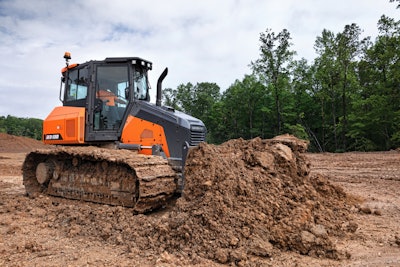 The Develon DD130 has 146 horsepower, a hydrostatic transmission and an operating weight of 31,074 pounds. Blade width is 10 feet 2 inches and carrying capacity is 4.6 cubic yards. Standard features include rearview camera, 8-inch Smart Touch display, blade shake function, blade assist function, and a 2D grading system.Develon
The Develon DD130 has 146 horsepower, a hydrostatic transmission and an operating weight of 31,074 pounds. Blade width is 10 feet 2 inches and carrying capacity is 4.6 cubic yards. Standard features include rearview camera, 8-inch Smart Touch display, blade shake function, blade assist function, and a 2D grading system.Develon
Standard features on both include a hydraulic fan with auto and manual reversing, an auxiliary circuit for the optional triple-shank ripper, single- and dual-flange rollers and segmented sprockets in the undercarriage and an electric tilt cab.
Both also come with Dozer Assist Control, which is Develon’s proprietary 2D system.
Visibility is aided by the low, narrow hood and the placement of components; the charge air cooler, standard precleaner and air filter are up front while the oil cooler and radiator are at the back.
A key factor with both models is their excellent power-to-weight ratios, according to Brandon Crockett, dozer and ADT product manager, Develon.
Either model is suitable for a full range of dozing tasks, but there are differences in design.
The DD100 has a rigid frame, which costs less and which some operators prefer for finish grading.
The DD130 has an equalizer undercarriage that better follows contours due to the complementary action of an equalizer bar and a pivot shaft for the rails.
The two blade options are a wider blade and tracks with the low-ground pressure spec and narrower blade and tracks with the XL spec. The general-purpose track guard configuration allows material to exit the undercarriage more easily, while the full track length guard minimizes material getting into the tracks and is better for rocky soils.
John Deere
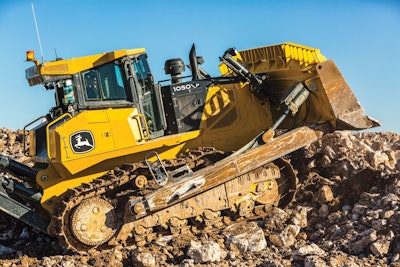 The 356-horsepower. John Deere 1050 P-Tier dozer has an operating weight of 95,400 pounds. Features of the updated P-Tier model include a standard 168-inch semi-U blade with a redesigned linkage that reduces overall length of the dozer by 17 inches. The inverted tilt/pitch cylinders give a wider view to the end bits and resist material buildup on the cylinder seal.John Deere
The 356-horsepower. John Deere 1050 P-Tier dozer has an operating weight of 95,400 pounds. Features of the updated P-Tier model include a standard 168-inch semi-U blade with a redesigned linkage that reduces overall length of the dozer by 17 inches. The inverted tilt/pitch cylinders give a wider view to the end bits and resist material buildup on the cylinder seal.John Deere
Midsize dozers – 700L, 750L and 850L – are L Series models awaiting transition to Deere’s Tiering strategy. SmartGrade and Slope Control can be equipped as needed and upgraded at any time.
Large dozers are the 950 P-Tier and 1050 P-Tier. The 950 includes a power-angle-tilt (six-way) blade or outside-dozer blade. The l050 now has a JD14 13.6-liter engine replacing the 13.5-liter engine of the K Series. The new engine is smaller, lighter, more fuel efficient and has hydraulic automatic valve lash adjustment and simpler exhaust aftertreatment.
Small dozers are the 450 P-Tier, 550 P-Tier and 650 P-Tier. Electrohydraulic models include EZ Grade as standard equipment, which uses sensors on the blade and body, with Slope Control as an option for improved productivity in mainfall and cross-slope work.
Cabs of all eight models have similar features and design to increase familiarity for operators moving from one dozer to another. Operations Center provides real-time updates and reports, while Remote Display Access and wireless data transfer expedite information exchange and updates to the machine.
ECO monitors several operating parameters to deliver fuel efficiency and the correct power for all loads. Custom setting allows operator to configure such features as forward and reverse speed, steering response and shift points to their preferences.
Deere offers Rebuild, a comprehensive rebuild to bring a dozer back into use as a primary machine, and ReLife, a selective process to bring a machine into use as a secondary dozer in a cost-effective way. Matt Costello, product marketing manager, encourages customers to consider these options as part of the initial acquisition process of a new dozer to ensure maximum value.
Komatsu
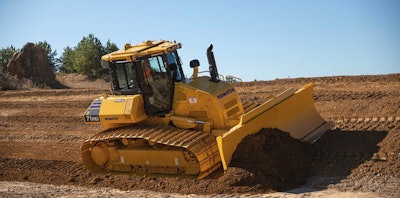 Komatsu’s 51,000-pound D71PXi runs on a 237-horsepower Komatsu engine and comes with iMC 2.0 intelligent machine control fully integrated. It is Komatsu’s largest dozer with a hydrostatic transmission. It has a blade capacity of 6.1 cubic yards.Komatsu
Komatsu’s 51,000-pound D71PXi runs on a 237-horsepower Komatsu engine and comes with iMC 2.0 intelligent machine control fully integrated. It is Komatsu’s largest dozer with a hydrostatic transmission. It has a blade capacity of 6.1 cubic yards.Komatsu
The 51,000-pound dozer comes with integrated iMC 2.0 intelligent machine control, making it what Komatsu calls a “smart dozer.”
Komatsu designed the machine control not just for finish grading but for using automatics the entire workday, even for general site cleanup and backfilling trenches. The system enables operators to perform auto-stripping, auto-spreading and high-production dozing for more precise and more productive dirt moving, according to Komatsu.
It is also Komatsu’s largest dozer with a hydrostatic transmission, designed to give it faster travel and steering response, the company says.
The dozer runs on a 237-horsepower Komatsu engine and has a blade capacity of 6.1 cubic yards.
Liebherr
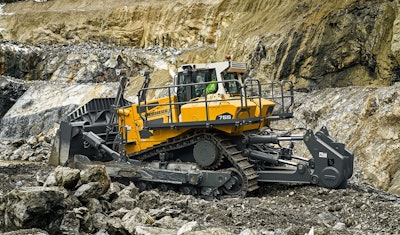 Launched in 2023, the 118,000-pound PR766 Generation 8 dozer is the “only hydrostatic drive dozer in its class,” Liebherr says. It runs on a 420-horsepower Liebherr diesel engine. Blade capacities range from 17.8 cubic yards with a semi-U blade or 22 cubic yards with a U-blade.Liebherr
Launched in 2023, the 118,000-pound PR766 Generation 8 dozer is the “only hydrostatic drive dozer in its class,” Liebherr says. It runs on a 420-horsepower Liebherr diesel engine. Blade capacities range from 17.8 cubic yards with a semi-U blade or 22 cubic yards with a U-blade.Liebherr
The dozers all are equipped with hydrostatic drive – including the PR 776, which at 72 metric tons and 768 horsepower is the world’s largest dozer with the technology. On a recent episode of The Dirt, guest Emanuel Vasquez, Liebherr’s product manager for crawler dozers and loaders, explained that the company has been deploying hydrostatic drive since the 1950s for its reduced noise and smoother ride, as well as other advantages.

 machineryasia
machineryasia 


